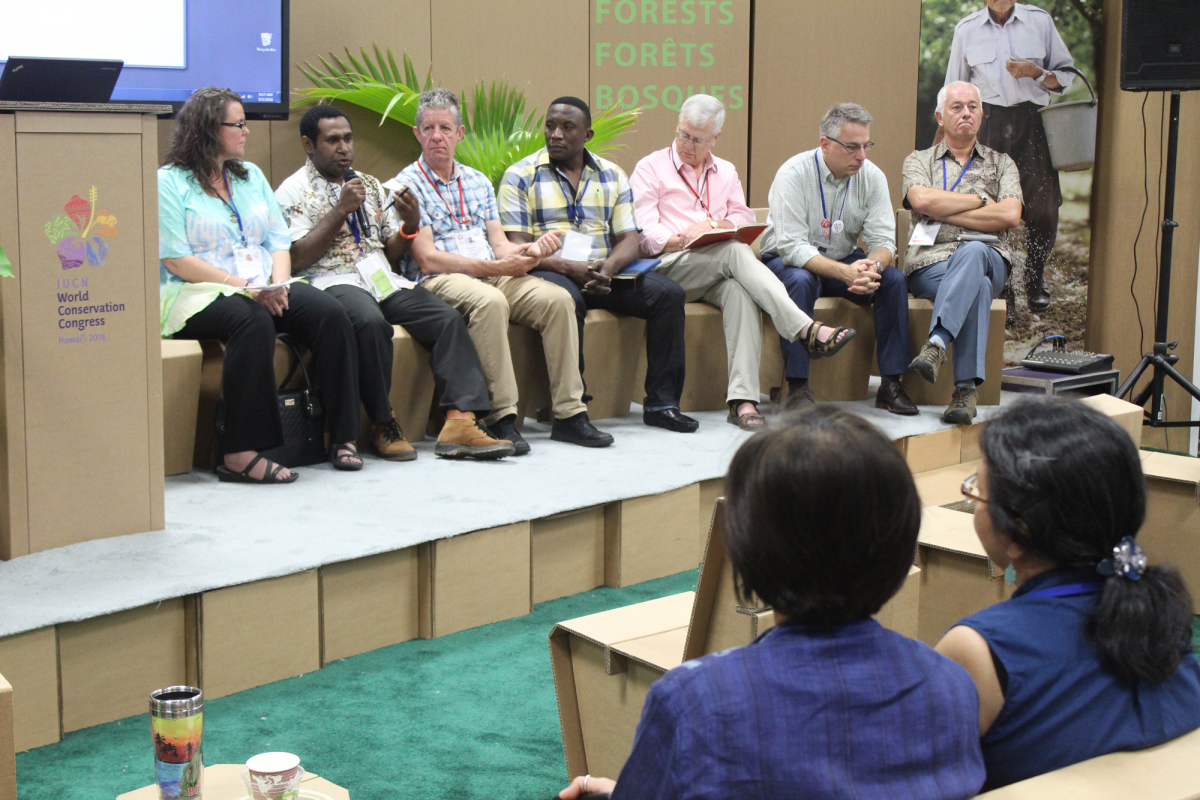Convening experts to move forward on primary forests: IUCN’s Primary Forests Task Team at Congress
Primary forests are under intense pressure – a rapidly dwindling resource of which only one-fifth are officially protected. Conservation of primary forests can take place in many forms and on many scales, from small community-controlled fragments to large nationally protected areas. But signs of hope are emerging in pockets around the world and from global movements such as those discussed at the IUCN World Conservation Congress in September.

Photo: IUCN
Primary forests are among the most important and valuable habitats on Earth – and they are finite – making up only 36% of the world’s remaining forests. A primary forest is a “naturally regenerated forest of native species, where there are no clearly visible indications of human activities and the ecological processes are not significantly disturbed.” Be they tropical forests on mountain slopes in Papua New Guinea, dry forests in Mexico, or boreal forests in Russia, primary forests are among the most biodiverse ecosystems in the world. They provide products and services that allow other elements of nature to thrive. In order to keep those systems and benefits in existence, urgent action to halt the loss of the world’s remaining primary forests is needed.
Stemming from Resolution 060 of the 2012 IUCN World Conservation Congress, where it was acknowledged that “Earth continues to face an extinction crises, and that primary forests, particularly tropical primary forests, contain half or more of the planet’s terrestrial biodiversity,” IUCN formed a task team of primary forest experts consisting of representatives of IUCN Members, Commissions, Secretariat and Council to work on analysing the current state of knowledge and discuss measures and solutions to the challenges faced by primary forests. This was done, in part, to build recommendations based on their expertise and insights on these topics.
Members of this Primary Forests Task Team met at the 2016 IUCN Congress to share views and experiences with regards to the challenges and opportunities around preserving the unique attributes and natural diversity of primary forests. The workshop integrated the audience in a participatory fashion with moderated interaction between participants and panellists.
After each panel member provided insight on their area of expertise and experiences to the entire group, all participants assembled into small break-out groups to dialogue on primary forest issues. Each of the breakout groups concluded that the value of IUCN as a convenor on primary forest discussions is key. Using the collective networks and influence of IUCN to bring together people beyond the global or even national levels to focus on discussions around primary forests on regional and community levels is a crucial asset that will contribute toward progress.
Beyond building support for and knowledge around the significance of conserving primary forests, the group agreed that they needed to customise the positive messages about primary forests and, in many cases, make tangible links to local livelihoods. “We really need to showcase that managing primary forests in sustainable ways by communities can really bring improved livelihoods,” reported Miguel Calmon, Senior Manager, Landscape Restoration Knowledge, Tools and Capacity, of IUCN’s Global Forest and Climate Change Programme. He then added that, “cases like what we heard this morning show that people can make good use of primary forests without losing their biodiversity value.”
The continuation of the work of the Task Team is one of the fundamental components in the adoption process of IUCN Motion 048 – “Protection of primary forests, ancient forests and intact forest landscapes.” This motion tied IUCN’s efforts toward conserving primary forests into other global initiatives such the Paris Agreement and the Sustainable Development Goals.
Perhaps most importantly, the motion “ensures that the conservation of primary forests, including intact forest landscapes, is an integral component of the implementation of the IUCN Programme 2017-2020.” That is no small achievement. Stewart Maginnis, Global Director of IUCN’s Nature-based Solutions Group, who facilitated the Task Team session, stressed that “primary forests are a critical and valuable global resource, and that as IUCN moves forward with motion 048 and the resolution that follows, and incorporates this value into our plans over the coming years, primary forests will become an increasingly important and integrated focus of our programmes.”



